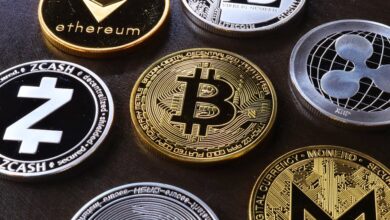Maximizing Returns: A Comprehensive Guide to Gold Investment in Bullion, Coins, ETFs, and Mining Stocks

As investors seek to diversify their portfolios and hedge against economic uncertainty, gold investment has emerged as a popular choice. Traditionally viewed as a safe haven asset, gold offers a unique blend of stability and growth potential, appealing to both seasoned investors and newcomers alike. In this comprehensive guide, we will explore the various avenues for investing in gold, including gold bullion, coins, and ETFs. We will delve into the nuances of the gold market, analyzing current trends in gold prices, futures, and the performance of gold mining stocks. Additionally, we will examine the critical role gold plays in global economics, particularly as central banks build their gold reserves in response to inflation and market volatility. From the allure of physical gold to the benefits of gold recycling and collectibles, this article will provide valuable insights into the multifaceted world of gold investment. Whether you're considering gold bars, coins investing, or the latest in gold technology, understanding these elements will empower you to make informed decisions in the evolving landscape of the gold trade. Join us as we navigate through the complexities of gold production, market analysis, and the sustainable practices shaping the future of gold mining.
- 1. Understanding Gold Investment: A Comprehensive Guide to Gold Bullion, Coins, and ETFs
- 2. Navigating the Gold Market Trends: Analyzing Gold Prices, Futures, and Mining Stocks
- 3. The Role of Gold as a Safe Haven Asset: Exploring Gold Reserves and Central Banks' Strategies
1. Understanding Gold Investment: A Comprehensive Guide to Gold Bullion, Coins, and ETFs
Investing in gold has long been considered a strategic move for those looking to diversify their portfolios and hedge against economic uncertainty. As a safe haven asset, gold tends to retain its value during times of financial instability, making it a popular choice among investors. This comprehensive guide will explore the various avenues for gold investment, including gold bullion, coins, and exchange-traded funds (ETFs).
Gold bullion refers to the physical gold in the form of bars or ingots. These investment-grade metals are typically 99.5% pure and are a direct way to invest in gold. Owning physical gold allows investors to hold a tangible asset that can be stored securely, unlike digital assets. However, it also requires considerations around storage, insurance, and liquidity.
Gold coins are another popular investment option. Coins, such as the American Gold Eagle or the Canadian Maple Leaf, not only represent an investment in gold but also hold collectible value. Many investors choose gold coins for their aesthetic appeal and historical significance. Investing in gold coins can be a way to capitalize on both gold prices and the demand for collectibles.
Gold ETFs have gained traction in recent years, offering a more accessible way to invest in gold without the need to physically hold the metal. These funds track the price of gold and are traded on stock exchanges, making them a convenient option for investors. Gold ETFs provide liquidity and ease of trading while still allowing exposure to gold market trends.
Investing in gold mining stocks is another avenue for gaining exposure to gold. These stocks represent companies involved in the exploration, extraction, and production of gold. While they can offer significant returns when gold prices rise, they also come with increased risk due to operational challenges and market fluctuations. It's essential to conduct thorough gold market analysis before venturing into mining stocks.
In addition to traditional gold investments, innovative options have emerged, such as gold futures and gold recycling. Gold futures allow investors to speculate on the future price of gold, while gold recycling promotes sustainability within the gold market by repurposing existing gold products, which is particularly relevant in today's environmentally conscious climate.
As central banks continue to hold significant gold reserves, understanding the interplay between gold and inflation becomes critical for investors. Historically, gold has served as a hedge against inflation, preserving purchasing power when fiat currencies face devaluation. The relationship between gold and cryptocurrency is also evolving, as some investors view digital currencies as alternative forms of wealth preservation alongside gold.
In summary, gold investment encompasses various forms, from physical gold bullion and coins to ETFs and mining stocks. Each method has its unique advantages and considerations, making it essential for investors to assess their individual goals and risk tolerance. As global gold demand fluctuates and gold market trends evolve, staying informed about gold prices and the broader economic landscape will be key to successful investing in this precious metal.
2. Navigating the Gold Market Trends: Analyzing Gold Prices, Futures, and Mining Stocks
Investing in gold requires a keen understanding of the various market trends that influence gold prices and investment opportunities. As a safe haven asset, gold has historically served as a hedge against inflation and economic uncertainty. Investors navigate the gold market by analyzing several key factors, including gold prices, futures contracts, and the performance of gold mining stocks.
Gold prices are determined by a combination of global demand and supply dynamics. Central banks, for instance, hold substantial gold reserves, which can impact the market significantly. When central banks increase their gold holdings, it often signals a lack of confidence in fiat currencies, driving gold prices higher. Additionally, fluctuations in gold production, influenced by mining companies and sustainable gold mining practices, can also affect prices. Investors should monitor these factors closely to make informed decisions.
Gold futures contracts allow investors to speculate on future gold prices, providing opportunities for both hedging and profit. By analyzing gold futures, investors can gauge market sentiment and anticipate price movements. This analysis often includes studying global economic indicators and geopolitical events, which can lead to increased demand for gold as a safe haven asset.
Gold mining stocks represent another investment avenue. These stocks can offer leveraged exposure to gold prices, as the profitability of mining companies is directly linked to gold market trends. Investors should consider factors such as gold production levels, operational efficiency, and management strategies when evaluating mining stocks.
Moreover, gold ETFs provide an accessible means to invest in physical gold without the complexities of storage and security. These funds track the price of gold bullion and can be an attractive option for those looking to diversify their portfolios.
As the gold trade evolves, emerging trends like gold recycling and innovations in gold technology are shaping the future of the market. Sustainable gold mining practices are increasingly important, as consumers become more conscious of their investment's environmental impact.
In summary, navigating the gold market trends requires a comprehensive analysis of gold prices, futures, and mining stocks. By staying informed about global gold demand, economic factors, and innovations in the gold industry, investors can position themselves for success in the ever-changing landscape of gold investment.
References:
– World Gold Council. (2023). Gold Demand Trends Q2 2023. Retrieved from https://www.gold.org
– Kitco News. (2023). What’s Driving Gold Prices in 2023? Retrieved from https://www.kitco.com
– Bloomberg. (2023). The Future of Gold Mining: Sustainability and Innovation. Retrieved from https://www.bloomberg.com
3. The Role of Gold as a Safe Haven Asset: Exploring Gold Reserves and Central Banks' Strategies
Gold has long been recognized as a safe haven asset, particularly during times of economic uncertainty and inflation. Central banks around the world maintain significant gold reserves as part of their monetary policy strategies, reflecting the enduring trust in gold's stability and value. When inflation rises or geopolitical tensions escalate, investors often flock to gold, driving up demand and influencing gold prices.
Central banks' gold strategies play a vital role in shaping the gold market trends. For instance, when central banks increase their gold holdings, it signals confidence in gold as a hedge against economic instability. This can lead to an increase in gold prices, as the market responds to heightened demand. The relationship between gold and inflation is particularly noteworthy; as inflation erodes the purchasing power of fiat currencies, gold often retains its value, making it an attractive option for investors looking to protect their wealth.
In addition to traditional physical gold investments, such as gold bullion and coins, many investors are turning to gold ETFs and gold futures for exposure to the gold market without the need for physical storage. These financial instruments provide a convenient way to invest in gold while benefiting from the price movements in the gold market. However, it's essential to conduct thorough gold market analysis to understand the potential risks and rewards associated with these investment vehicles.
The gold trade is also influenced by factors such as gold recycling and sustainable gold mining practices. As global gold demand continues to rise, responsible sourcing and refining of gold become crucial to ensure that investments align with ethical standards. Furthermore, issues like gold smuggling can impact the flow of gold into markets, affecting both availability and pricing.
As the landscape of investment evolves, the interplay between gold and emerging assets like cryptocurrency has sparked interest. Some investors view gold and cryptocurrency as complementary assets, with gold serving as a traditional safe haven and cryptocurrency offering modern alternatives. This dynamic is reshaping how investors approach gold investment strategies, particularly in a world grappling with economic shifts and technological advancements.
In conclusion, the role of gold as a safe haven asset is reinforced by central banks' strategies and the ongoing global demand for gold. Whether through physical gold, gold mining stocks, or financial products like gold ETFs, understanding the nuances of gold investment is essential for navigating the complexities of the gold market.
In conclusion, investing in gold remains a strategic move for both seasoned investors and newcomers alike. As we have explored throughout this article, gold investment encompasses various avenues, including physical gold in the form of bullion and coins, gold ETFs, and shares in gold mining companies. Understanding gold market trends and the dynamics of gold prices is essential for making informed decisions in today’s economic climate, especially as gold continues to be regarded as a safe haven asset amid inflationary pressures and market volatility.
The role of gold in the portfolios of central banks further underscores its importance as a reliable store of value and a hedge against uncertainty. With global gold demand on the rise and the implications of sustainable gold mining practices becoming increasingly significant, investors have ample opportunities to diversify their holdings.
Moreover, as we witness the intersection of gold and cryptocurrency, the landscape of investment continues to evolve, presenting new avenues for growth and security. Whether you choose to invest in gold coins, gold bars, or explore gold recycling as part of your strategy, the enduring appeal of gold as a luxury and collectible asset will likely persist.
Ultimately, a well-rounded approach to gold investment can enhance your portfolio's resilience and provide a safeguard against economic fluctuations. As you navigate the complexities of the gold market, staying informed about gold refining, production, and market analysis will empower you to make strategic decisions that align with your financial goals.
References:
– World Gold Council. (2023). Gold Demand Trends. Retrieved from [https://www.gold.org](https://www.gold.org)
– Kitco News. (2023). Gold Market Analysis and Forecasts. Retrieved from [https://www.kitco.com](https://www.kitco.com)
– International Monetary Fund. (2023). Central Banks and Gold Reserves. Retrieved from [https://www.imf.org](https://www.imf.org)





